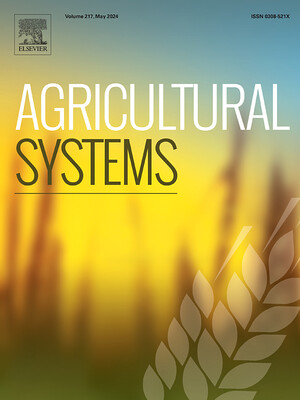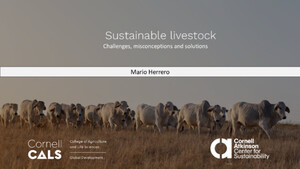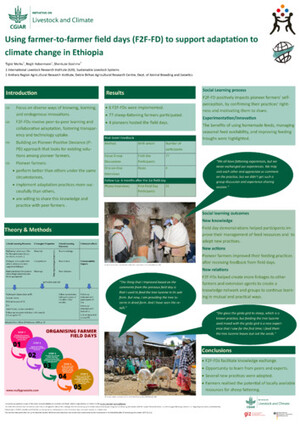
Agricultural intensification scenarios, household food availability and greenhouse gas emissions in Rwanda: Ex-ante impacts and trade-offs
Abstract
Rwanda's agricultural sector is facing severe challenges of increasing environmental degradation, resulting in declining productivity. The problem is likely to be further aggravated by the growing population pressure. A viable pathway is climate smart agriculture, aiming at the triple win of improving food security and climate change adaptation, while contributing to mitigation if possible. The Government of Rwanda has initiated ambitious policies and programs aiming at low emission agricultural development. Crop focused policies include the Crop Intensification Program (CIP) which facilitates access to inorganic fertilizer and improved seeds. In the livestock subsector, zero-grazing and improved livestock feeding are encouraged, and the Girinka program provides poor farm households with a crossbred dairy cow. In this study, we aimed at assessing the potential impact of these policy programs on food availability and greenhouse gas (GHG) emissions of 884 households across different agro-ecologies and farming systems in Rwanda. Household level calculations were used to assess the contribution of current crops, livestock and off-farm activities to food availability and GHG emissions. Across all sites, 46% of households were below the 2500 kcal MAE− 1 yr− 1 line, with lower food availability in the Southern and Eastern Rwanda. Consumed and sold food crops were the mainstay of food availability, contributing between 81.2% (low FA class) to 53.1% (high FA class). Livestock and off-farm income were the most important pathways to higher FA. Baseline GHG emissions were low, ranging between 395 and 1506 kg CO2e hh− 1 yr− 1 per site, and livestock related emissions from enteric fermentation (47.6–48.9%) and manure (26.7–31.8%) were the largest contributors to total GHG emissions across sites and FA classes. GHG emissions increased with FA, with 50% of the total GHG being emitted by 22% of the households with the highest FA scores. Scenario assessment of the three policy options showed strong differences in potential impacts: Girinka only reached one third of the household population, but acted highly pro-poor by decreasing the households below the 2500 kcal MAE− 1 yr− 1 line from 46% to 35%. However, Girinka also increased GHG by 1174 kg CO2e hh− 1 yr− 1, and can therefore not be considered climate-smart. Improved livestock feeding was the least equitable strategy, decreasing food insufficient households by only 3%. However, it increased median FA by 755 kcal MAE− 1 yr− 1 at a small GHG increase (50 kg CO2e hh− 1 yr− 1). Therefore, it is a promising option to reach the CSA triple win. Crop and soil improvement resulted in the smallest increase in median FA (FA by 755 kcal MAE− 1 yr− 1), and decreasing the proportion of households below 2500 kcal MAE− 1 yr− 1 by 6%. This came only at minimal increase in GHG emissions (23 kg CO2e hh− 1 yr− 1). All policy programs had different potential impacts and trade-offs on different sections of the farm household population. Quick calculations like the ones presented in this study can assist in policy dialogue and stakeholder engagement to better select and prioritize policies and development programs, despite the complexity of its impacts and trade-offs.
Citation
Paul, Birthe; Frelat, R.; Birnholz, Celine; Ebong, C.; Gahigi, A.; Groot, J.C.J.; Herrero, M.; Kagabo, Decire; Notenbaert, An; Vanlauwe, B.; Van Wijk, M.T.. 2017. Agricultural intensification scenarios, household food availability and greenhouse gas emissions in Rwanda: Ex-ante impacts and trade-offs . Agricultural Systems.1-11 p.










